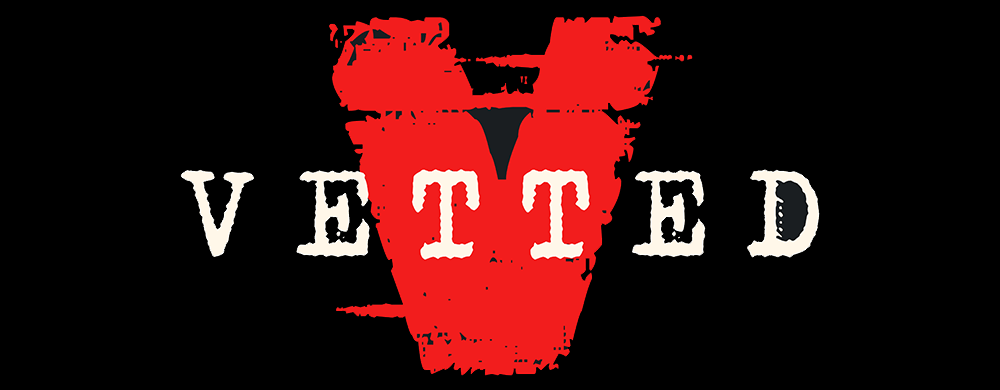Diana Pasulka Pushes Back in NEW New York Times Interview
What's up, fellow seekers? If you've ever found yourself scratching your head about the seemingly never-ending mystery that is the UFO phenomenon, you're not alone. The world of unidentified aerial phenomena (UAP) is awash with whistleblowers, government denials, secret programs, and everyday people trying to make sense of it all. In a recent stretch of engaging conversation between Diana Pasulka and The New York Times, these tangled threads were pulled apart, revealing just how complicated—and fascinating—this quest for answers truly is.
The Sedona Backdrop and a Fresh Perspective
Let’s set the stage: Patrick, your on-the-road guide from Vetted, reports in from mystical Sedona, dogs in the background and documentary cameras rolling. It's not your everyday studio-bound video but a peek into a real-life adventure. Amidst this, Patrick breaks down a riveting New York Times interview with Dr. Diana Walsh Pasulka, whose book "American Cosmic" delves deep into the intersection of UFOs, religious experience, and modern technoculture. This wasn’t your run-of-the-mill interview—here was a neutral platform offering real pushback and space for honest reflection. The result? An eye-opening conversation for skeptics, believers, and the endlessly curious.
When Government Employees Become UFO Enthusiasts
We all picture government whistleblowers as covert agents with classified dossiers. But as Diana described, those who reached out to her weren’t Hollywood caricatures. They were scientists, engineers, and employees from places like NASA or major aerospace companies—people with day jobs as mission controllers or technical specialists. What united them? A private (sometimes off-the-books) passion for investigating strange aerial phenomena.
The twist? Many referred to their investigative work as their “hobby job”—not official government assignments, but independent passion projects they kept quiet about. Some would scout alleged UFO crash sites and collect scraps for scientific analysis, always walking the fine line between their public duties and private pursuits. It’s a shadow world within the shadowy, where curiosity and duty blend.
Layers of Secrecy and Public Confusion
Things get even more perplexing when you realize how many layers these stories possess. On one hand, there’s the public record: since the 2017 New York Times exposé, we know the US government has at least officially acknowledged the existence of anomalous aerial events. There are videos, classified reports, and even Congressional testimony. On the other hand, there are countless whispers, private testimonials, and claims of secret programs holding materials from “other worlds.”
That’s where confusion takes root. As Diana pointed out, for each whistleblower or credible military official stepping forward to affirm the existence of secret studies or even nonhuman artifacts, there is another official source denying any such ongoing programs. For the average curious citizen, it’s no wonder the waters are so muddy. Should we trust the government’s public face, the passionate insiders turned hobbyist investigators, or the whistleblowers who risk their reputations by speaking out?
Diana’s own journey mirrors this tension. Even after embedding with researchers and writing an entire book, she didn’t immediately leap to belief. She stayed open, skeptical, but above all, curious. For her, and for many trying to untangle the contradictory information, the desire for clarity is endless—and the outright lack of transparency only makes the hunt more compelling.
Beyond the Headlines: Why It Matters to All of Us
At the heart of this dialogue is a universal challenge: how do we navigate a field where information is at once everywhere—and yet so frustratingly elusive? The phenomenon touches on more than just the possible existence of extraterrestrials; it strikes at our need for truth, community, and wonder. Whether it’s government employees out on “hobby” investigations, skeptical scientists, or ordinary folks keeping an eye on the night sky, we’re all drawn to the mystery for reasons both personal and collective.
The New York Times interview, as highlighted by Patrick, stands out because it asks the tough questions and doesn’t just let claims slide. It interrogates motives, clarifies definitions (is it government work or a private obsession?), and demands accountability. Yet, as Diana reflects, the confusion is more than just frustrating—it’s a deliberate byproduct of the way our institutions release (or obscure) information. Until there’s true transparency, curiosity is our best guide.
A Call to Curiosity (and a Little Bit of Skepticism)
So what do we take away from all this? We’re reminded that interest in the unexplained is a profoundly human trait. For every person discouraged by confusion or secrecy, there’s another who finds the unknown irresistible. As Patrick’s Sedona adventure shows, sometimes exploration means setting aside easy answers and embracing the journey—the late-night sky watches, the “out there” experiments, and the thoughtful conversations that keep us asking, “What if?”
If you’re hungry for more than just speculation, check out the linked New York Times video interview. It’s a masterclass in how to handle complex topics with honesty and rigor. Until then, remember: in the quest for understanding, every question counts, and every day is a gift. Keep searching, keep questioning, and—who knows—maybe one day the truth will be just as strange as the stories that keep us curious.
Like, subscribe, and never be afraid to ask big questions. Peace!
